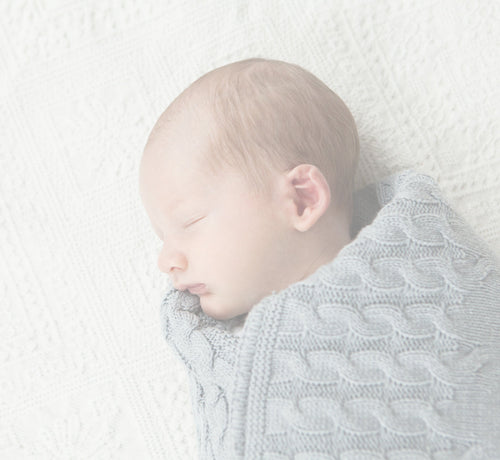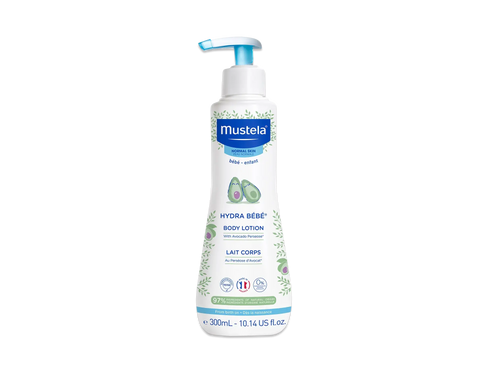You saw what swaddling did for your baby in the hospital. They settled right down once the nurses wrapped them up snugly. It was so impressive you decided to try it at home. But now that the time has come, you can’t quite figure out how to swaddle a baby.
Don’t worry, you’re not alone. Even experienced parents can find it challenging to keep the blanket in place and their baby’s arms tucked in.
If you’re struggling with swaddling, this step-by-step guide will walk you through the process. We’ll also look at some benefits of swaddling and how to incorporate it into a safe sleep routine for your little one.
So grab a blanket, and let’s get started!
What Is Swaddling?

Swaddling is a traditional practice of wrapping infants in a blanket or cloth with their arms tucked in to help babies feel more calm and secure.
Parents have been swaddling their babies for centuries, for good reason. When done correctly, it’s been proven to promote better sleep patterns in newborns.
Benefits Of Swaddling
Better sleep isn’t the only benefit of swaddling. When swaddled, your newborn also:
- Stays warm without using extra blankets
- Experiences a soothing light pressure on their body that mimics the womb
- Startles less often
- Stays on their back, which can help reduce the risk of SIDS
- Cries less
Swaddling is especially effective for premature babies since it helps promote oral feeding skills and can reduce pain. NICU nurses often swaddle babies.
However, the benefits of swaddling aren’t just for babies born early. It’s a simple way to help nearly any newborn adjust to life outside the womb.
Risks Of Swaddling
While swaddling is generally considered safe and beneficial, parents should know the possible risks.
Hip Dysplasia
Newborns tend to look frog-legged. That’s because their hip joints are still developing. If you force your little one’s legs to be straight in their swaddle or wrap them too tightly, you could inadvertently cause hip dysplasia.
To prevent this, always swaddle with their legs slightly bent. Once you’ve wrapped your baby, check to see if you can get two fingers between them and the blanket. This way, they’ll have room to kick their legs, which is important for their development.
Suffocation
Start your swaddle at your baby’s shoulders. The blanket should never cover their neck or face. Otherwise, it could cause suffocation.
Overheating
Newborns often have trouble regulating their temperature. Always use thin material when swaddling your little one to help prevent overheating.
In addition, never place extra blankets or fabric over your swaddled baby. Not only could this cause them to get too hot, but it could also block their airway and prevent them from breathing.
Safe Sleep And Swaddling
Every parent wants their baby to sleep longer. But even more importantly, you want them to sleep safely.
Here are some tips for practicing safe sleep guidelines while swaddling your baby:
- Put your baby to sleep on their back
- Use only flat, firm surfaces for sleeping
- Check the room temperature to keep your baby comfortable
- Avoid having loose blankets, pillows, or toys in the crib
- Share a room with your baby, not a bed
By following these practices, you’ll help keep your baby safe.
What Type Of Blanket To Use
Not every blanket is safe to use as a swaddle. You’ll need one that’s right in both material and size.
Material
Choose a lightweight blanket made from breathable fabric. Cotton, bamboo, or muslin are great options.
If you use a heavier blanket, getting the swaddle tight enough will be more challenging and your baby might overheat.
Size
Look for a blanket that’s at least 40 inches square. That’s a bit larger than a standard receiving blanket. If you try to use one that’s too small, you won’t get a tight swaddle and your baby will easily wriggle out of it.
Tip: Let your baby’s size guide you when choosing the right size. It takes less material to swaddle a 5-pound baby than it does for an 11-pound one.
Special Swaddling Blankets
If you prefer, you can purchase a swaddling blanket specifically designed for this task. They often have features like Velcro tabs or snaps to make swaddling easier.
Read the directions for these blankets carefully and follow them as you wrap your baby. The steps may differ from the process below, depending on the design.
How To Swaddle A Baby

Now that you know about the benefits and risks of swaddling, let’s talk about how to swaddle a baby. It’s a simple, five-step process.
But before you begin, there’s something important you have to do first: check their diaper. There’s nothing worse than getting your little one all swaddled and then realizing you smell something fishy.
When that happens, you must completely undo the swaddle to take care of business, which can be frustrating, especially when you’re first learning how to swaddle a baby.
So check their diaper, and apply some Liniment or Diaper Rash Cream 123 to keep their skin soft and smooth.
Then, it’s time to swaddle. Here’s what you do:
1) Prepare The Blanket
Spread your swaddle blanket down on a flat, firm surface. Your bed or the couch works well. The blanket should look like a diamond. Then, take the top corner and fold it down part way.
2) Place Your Baby On The Blanket
Lay your baby down on their back in the center of the blanket. Their shoulders should be even with the fold at the top.
3) Pull The Left Side
Straighten your baby’s left arm and gently hold it by their side. Then, working quickly, take the left corner of the blanket over the left arm and across their chest.
Roll your baby slightly to the left side, and tuck the blanket underneath their body. Then, put them back onto their back.
4) Protect Their Legs
Look at your baby’s legs. Make sure they’re slightly bent, almost in a frog position. Without straightening their legs, bring the bottom corner of the blanket up and tuck it loosely behind the right shoulder.
Now, recheck your baby’s legs. They should have room to move and kick under the blanket. If they can’t, your swaddle is too tight. If that’s the case, undo this step and try it again.
5) Pull The Right Side
Next, you’re going to gently straighten your baby’s right arm and place it by their side. Take the right side of the blanket and pull it over this arm and across their chest to the left. Tuck the remainder of the fabric behind your baby into the blanket to hold it taut.
6) Keep Practicing
At first, your swaddles may not hold. Your baby may wiggle an arm out, or the blanket may slip down. That’s OK! It takes practice to perfect the art of swaddling.
Just keep practicing, and you’ll get the hang of it.
And if the method above doesn’t work for you or your baby, don’t worry. You can always try a different swaddling technique.
When To Stop Swaddling Your Baby
All good things must come to an end, even swaddling. But when should you stop wrapping your baby?
Most experts agree that once your baby shows signs of rolling over, it’s time to stop. Typically, this happens between 2 and 3 months of age.
If your baby were to roll onto their stomach while swaddled, they could suffocate. They simply don't have the neck strength to lift and turn their head to breathe in this position.
Don’t take any chances. Once your baby can roll, it’s time to stop swaddling.
Swaddle Your Baby Like A Pro!

Now that you know how to swaddle a baby, you’ll be doing it like a pro in no time. And who knows, you might even get some extra sleep because your baby feels so snug and cozy in their blanket.
Remember to always keep safe sleep guidelines in mind when swaddling, and put your baby down on their back when they’re wrapped.
And, of course, check that diaper before you begin. Mustela’s diaper change skincare products can help keep your baby dry and comfortable while they sleep.
Happy swaddling!
















